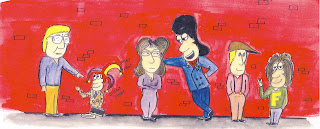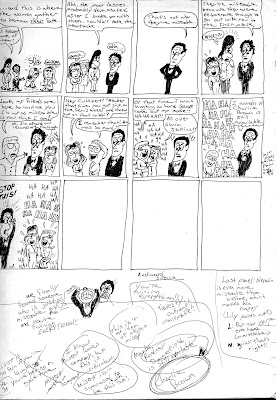or the first video to be shared on the Magnum Arts blog, enjoy this addictive, ultra-cool remix of Disney's Alice In Wonderland. This video is so mesmerizing, I could watch it all day! If you like the music enough (and I did), you can download it from the YouTube source through the following link. Copy and paste the link into your browser, then click on the "more info" link on the right side of the YouTube window, and it will give you the mp3 link.
http://www.youtube.com/watch?v=pAwR6w2TgxYDirectly beneath is another video, scenes from a video game called American McGee's Alice, which took Wonderland in a whole new, darker direction. The premise has Alice lying catatonic in an insane asylum, unresponsive to any outside stimuli. In order to regain her sanity, she must venture back, in her mind, to Wonderland, but she finds it a very different place. Dark, threatening, dangerous, she has to battle the Queen's card guards and a variety of monsters to free Wonderland from the evil that consumes it. This Alice is a far cry from the Disney version; she carries a knife and her apron is bloodstained. Her eyes have a vacant, haunted look. The game is a brilliant example of storytelling, mythology and graphics which still hold up. If you want to see the darker side of Wonderland, check it out. Sometimes traditional stories can be "refreshed" by telling them in a new way.
Note to Internet Explorer Users: I've noticed a big empty box that appears above the two videos; I'm not sure why. On Mozilla Firefox it appears perfectly. If you're using Microsoft's Internet Explorer, take my advice and use Firefox instead. It is a much, much, better Internet browser. It's free, open source and has much more useful features. Visit this link to learn more about Firefox.







































































